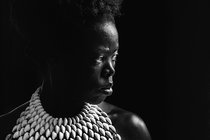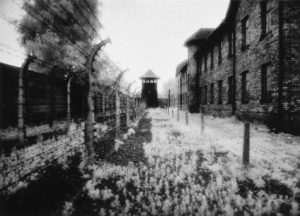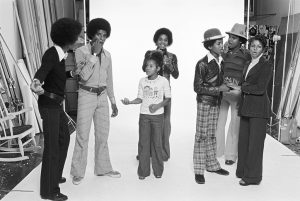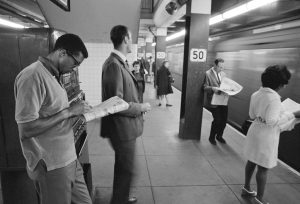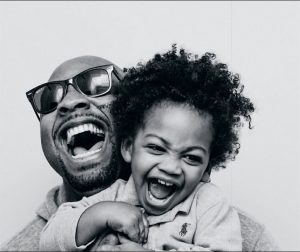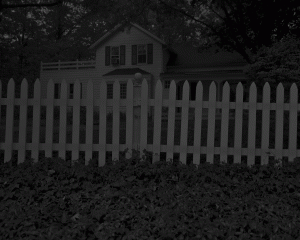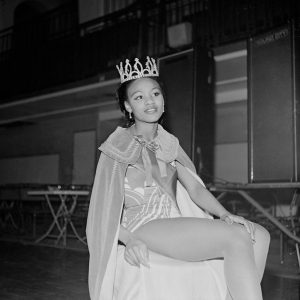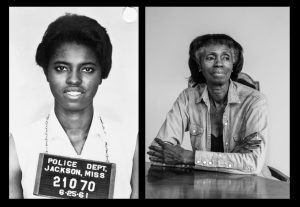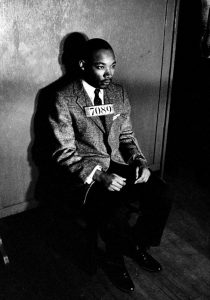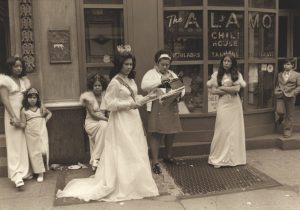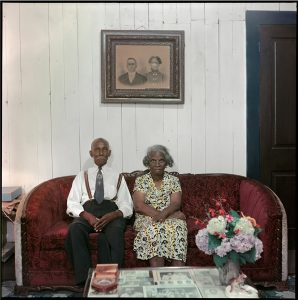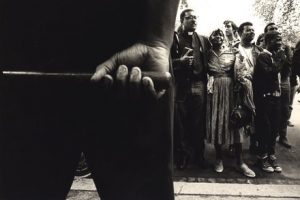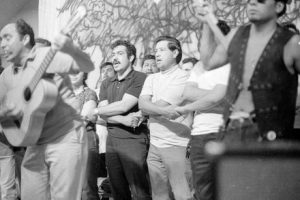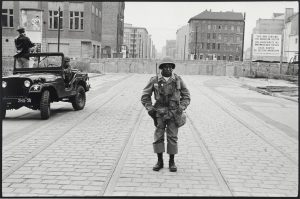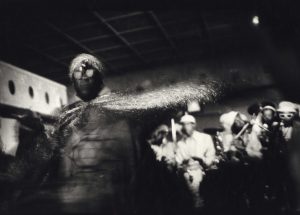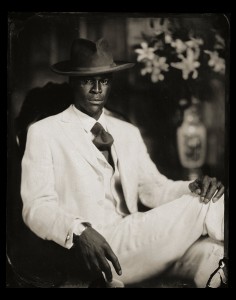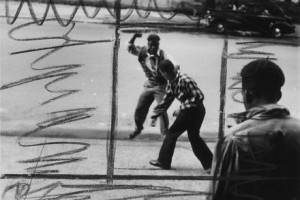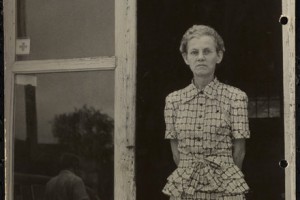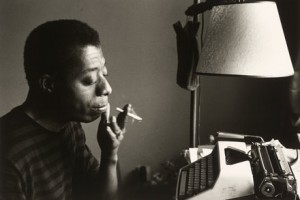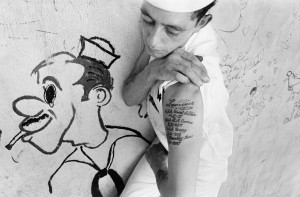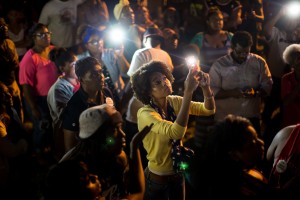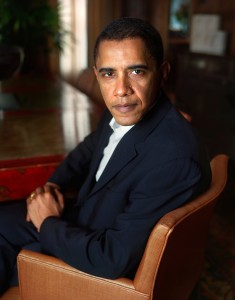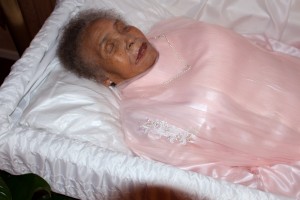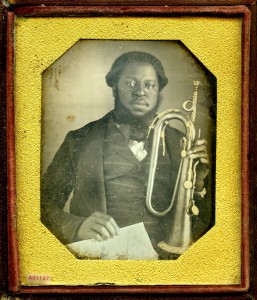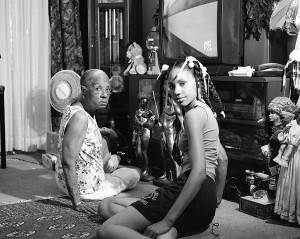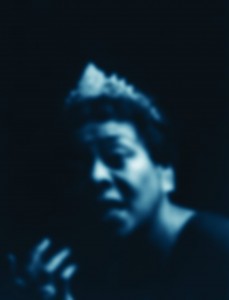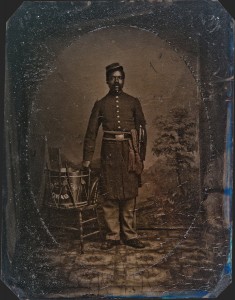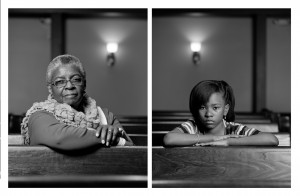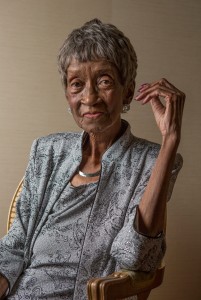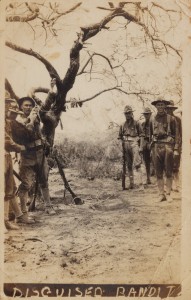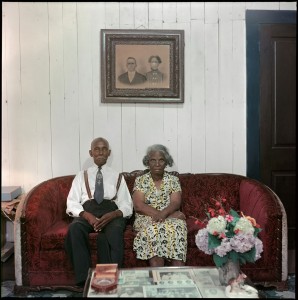The Race Stories column, published monthly for the Lens Section of the New York Times, was a continuing exploration of the relationship of race to photographic portrayals of race by CADVC Research Professor and Chief Curator, Dr. Maurice Berger.
*Click on Title to Access Essay
Zanele Muholi: Paying Homage to the History of Black Women *NEW*
Lens, New York Times, 3 December 2018
Through self-portraits, Zanele Muholi reimagines black identity and challenges the oppressive standards of beauty that often ignore people of color.
———-
The Holocaust’s Paradox of Good and Evil, in Photographs
Lens, New York Times, 19 November 2018
In her dark and evocative images, Judy Glickman Lauder explores the contrast between the reality of hate, the possibility of defeating it and photography’s role in spurring change.
———-

Capturing the Struggle for Racial Equality, Past and Present
Lens, New York Times, 15 October 2018
Sheila Pree Bright chronicles the longstanding and continuing legacy of black activism in her new book, “#1960Now.”
———-
Gordon Parks on Poverty, the ‘Most Savage of Human Afflictions’
Lens, New York Times, 10 September 2018
Mr. Parks realized the power of empathy to help people understand poverty. In this 1961 photo essay, he took readers inside the lives of a Brazilian boy, Flavio da Silva, and his family, who lived in a favela in the hills outside Rio de Janeiro.
———-
Chronicling the Virtuosity and Struggles of 1970s Soul and Funk Musicians
Lens, New York Times, 27 August 2018. 6 September 2018
Bruce W. Talamon photographed some of music’s brightest stars for a decade. He considers himself “a visual caretaker of black folks’ history.”
———-
The Quiet Heroism of Arthur Ashe
Lens, New York Times, 27 August 2018
In his photographs of Arthur Ashe’s historic victory at the 1968 US Open, John G. Zimmerman depicted the athlete as he lived, a complex and self-possessed man in the midst of a life-altering event.
———-
Revealing the Lives of Black Fathers
Lens, New York Times, 6 August 2018
Robyn Price Pierre looked to her family, classmates and friends to create personal photos exploring black fatherhood.
———-
Escaping to Freedom, in the Shadows of the Night
Lens, New York Times, 5 July 2018
A new series by the photographer Dawoud Bey summons a time in African-American history when the journey to freedom was made largely under cover of night.
———-
These 1970s Pageants Celebrated Black Women’s Beauty
For some women, members of West London’s Afro-Caribbean communities, pageants nurtured racial pride and self-expression.
———-
50 Years After Their Mug Shots, Portraits of Mississippi’s Freedom Riders
Lens, New York Times, 15 May 2018
The journalist and photographer Eric Etheridge provides visual and oral histories of the courageous men and women known as the Freedom Riders in the 1960s.
———-
Dr. King’s Complex Relationship with the Camera
Lens, New York Times, 30 March 2018
The most compelling photographs of Dr. Martin Luther King Jr. were neither idealized nor simplistic, but endeavored to portray his complexity and humanity.
———
Documenting the Dynamic Black Community of 1940s Seattle
Lens, New York Times, 27 March 2018
In the 1940s, Al Smith documented a heroic period for Seattle jazz in the integrated establishments of Jackson Street, where African-American performers and customers were embraced.
———-
An Elegy to India’s Vanishing Cinemas
Lens, New York Times, 7 February 2018
Nandita Raman spent three years photographing the decline of India’s single-screen movie houses for her series “Cinema Play House.”
———-
A Photographer’s Search for the Magic in Everyday Life
Lens, New York Times, 9 January 2018
Shawn Walker, a founding member of the Kamoinge Workshop, documented the lives of regular people and liberated his subjects from stereotypes and invisibility.
——–
Using Photography to Tell Stories About Race
Lens, New York Times, 6 December 2017
Maurice Berger, a research professor and curator, looks back on the events that led him to write about race and photography.
———-
Finding Inspiration in the Struggle at Resurrection City
Lens, New York Times, 24 October 2017
Jill Freedman left behind a career in advertising to live at Resurrection City, an encampment on the National Mall that was part of the Poor Peoples Campaign. Her pictures show a different, human and optimistic side to a historical event that has been labeled a failure by some.
———-
Lens, New York Times, 14 September 2017
A new exhibition at the Autry Museum of the American West documents the relatively unknown story of photography’s important role in the Chicano movement.
———-
The Cinematic Images of Gordon Parks
Lens, New York Times, 28 August 2017
Gordon Parks, perhaps more than any mid-20th-century photographer, understood how film and television conditioned the contemporary eye and mind.
———-
The pictures from Charlottesville, Va., reveal what pictures of oppression and violence generally do not: the ordinary people who typically perpetuate white supremacy.

———-
Black Soldiers: Fighting America’s Enemies Abroad and Racism at Home
Lens, New York Times, 5 June 2017
A book documents the complex history of African American soldiers, illuminating their triumphs and challenges.
———-
Jamel Shabazz’s 40-Years of Sights and Styles in New York
Lens, New York Times, 2 May 2017
Four decades ago, Jamel Shabazz set out to photograph black and Latino young people in New York City and explore the uplifting power of style, fashion, music and culture.
———-
The Lasting Power of Emmett Till’s Image
Lens, New York Times, 5 April 2017
The controversy over a white artist’s painting of Emmett Till’s corpse raises issues of appropriation without historical context.
———-

From Slavery to Freedom: Revealing the Underground Railroad
Lens, New York Times, 29 March 2017
While much has been written about the Underground Railroad, there has been little visual documentation. But a new photo book depicts the 1,400 mile long trek through forests, swamps, safe houses, and freedom in the north.
———-

Rarely Seen Photos of Japanese Internment
Lens, The New York Times, 8 February 2017
Dorothea Lange’s photographs of Japanese Americans interned during World War 2 capture not only the oppression of a people but also their struggle to retain their dignity.
———-
A Photographer Who Made “Ghosts” Visible
A major retrospective of the work of Ming Smith, a member of the Kamoinge Collective, showcases images that summon up dreamlike states that tease out complex emotions and ideas.
———-
The Heartbeat of Our Being, in Black and White
Whether depicting the spectacle of people barreling forward in a snowstorm or the faces of his subjects, mostly black but also white, Adger Cowans’ lyrical images portray life as resonant with feeling.
———-

Black Male Glamour, as Style and Substance
In “Vintage Black Glamour: Gentlemen’s Quarters,” Nichelle Gainer explores how prominent and accomplished black men shaped their image through personal style, taking charge of how they were seen to defy stereotypes.
———-
Photographing Civil Rights, Up North and Beyond
Lens, The New York Times, 18 October 2016
While the most indelible images from the civil rights era were of protest and conflict in the South, a new book explores the discrimination African-Americans struggled against in the North and elsewhere.
———-

On the Streets of Harlem, a Sense of ‘Erase and Replace’
Lens, The New York Times, 11 October 2016
Dawoud Bey’s large-scale photos of Harlem show the legendary cradle of African-American life confronting speculation, displacement and gentrification.
———-
Reconsidering the Black Panthers, Through Photos
Lens,The New York Times, 8 September 2016
A book and exhibit document the complexities of the Black Panther Party, a storied group that the F.B.I. once deemed “the greatest threat to the internal security of the country.”
———-
Whiteness and Race, Between the Storms
Lens, The New York Times, 11 August 2016
Pete Mauney asks viewers to look at race relations through white eyes in order to confront unspoken privilege and the lack of diversity in their lives.
———-
Photographs that Challenge Stereotypes about African American Youth
Lens, The New York Times, 19 July 2016
Picturing Children, the latest in a series of books published by the Smithsonian’s soon-to-open National Museum of African American History and Culture, resonates with the joy, contentment, resistance, determination, dissent and the routines of everyday African-American life.
———-
Black Dandies, Style Rebels with a Cause
Lens, The New York Times, 16 June 2016
The traveling exhibit “Dandy Lion” presents striking images of dapper men of African descent whose sartorial flair challenges notions of race and masculinity.
———-
Lens, The New York Times, 16 May 2016
Dean Wong’s new book on Chinese-American communities is a powerful corrective to decades of reporting on neighborhoods often represented in the cultural mainstream as exotic, insular or irrelevant.
———-
Lee Friedlander’s Overlooked Civil Rights Photographs
Lens, The New York Times, 22 February 2016
A new book shows how before Lee Friedlander became known as the quintessential street photographer, he chronicled an important — if sometimes overlooked — moment in civil rights history.
———-
Kamoinge’s Half Century of African American Photography
Lens, The New York Times, 22 January 2016
A new book takes a look at the collective’s groundbreaking work in “speaking of our lives as only we can.”
———-
The Modern Spirits of Ebony and Jet
Lens, The New York Times, 3 December 2015
Images of the empty interiors at the modernist headquarters of the Johnson Publishing Company uncannily embody the spirit of the groundbreaking African-American company that occupied the building for 40 years.
———-
Gordon Parks’s Harlem Argument
Lens, The New York Times, 11 November 2015
A look at Gordon Parks’s first photo essay for Life shows how editors’ choices of words and pictures can manipulate meaning.
———-
Photographing Japan, Through Shadows of the Past
Lens, The New York Times, 6 October 2015
Ishiuchi Miyako came of age in postwar Japan, in a town where she was caught between the lure of American pop culture and the fear of the military occupation that accompanied it.
———-
A Meditation on Race, in Shades of White
Lens, The New York Times, 17 September 2015
Marion Palfi set out to document racism and segregation in Georgia in the 1940s. Her unpublished manuscript that followed reveals racial attitudes that were neither uniform nor without ambivalence.
———-
In China, the Photobook as Art and History
Lens, The New York Times, 30 July 2015
An ambitious survey of China’s rich and diverse history of photobooks represents a turning point in narrowing the comprehension gap between East and West.
———-
Making a Confederate Flag Invisible
Lens, The New York Times, 30 June 2015
Removing the Confederate flag from the public square is but a first step toward deeper reflection on race.
———-
Past and Present Collide in Pittsburgh
Lens, The New York Times, 2 June 2015
Sometimes it takes a connection to the past to better understand the present. For essayists exploring African-American life in Pittsburgh, a trove of 80,000 photos taken by Charles “Teenie” Harris proves a great inspiration.
———-
African-American Life, Double-Exposed
Lens, The New York Times, 17 April 2015
Through the African American Lens, culled from a Smithsonian collection, shows how photography – and black photographers – reshaped a people’s image.
———-
Documenting Selma, from the Inside
Lens, The New York Times, 2 Mar 2015
The best-known images of the civil rights era were often dramatic and shocking, intentionally so, to jar a nation into action. But James Barker provided a quieter, insider’s perspective to the daily struggle.
———-
Complicating the Picture of Urban Life
Lens, The New York Times, 23 Feb 2015
A new exhibit features three Bronx-born photographers whose work explores the idea of community while challenging outdated, lingering notions.
———-
Robert Frank, Telling it like it Was
Lens, The New York Times, 15 Jan 2015
Robert Frank’s favorite image from “The Americans” captures the contradiction of racism in the liberal climes of mid-century San Francisco.
———-
Lens, The New York Times, 14 Jan 2015
A new online resource from the National Gallery allows viewers to explore its vast collection of Robert Frank’s work – from contact sheets to ephemera.
———-
American Culture, Riding a Mushroom Cloud
Lens, The New York Times, 24 Dec 2014
In “Chewing Gum and Chocolate,” Shomei Tomatsu explored the attractions and contradictions of American culture and the military in postwar Japan.
———-
Lens, The New York Times, 28 Nov 2014
A new book by Nichelle Gainer, Vintage Black Glamour, looks at the history of how black women used style and substance to counter stereotypes — or invisibility — in the mainstream.
———-
A Limited View of Boys from the Bronx
Lens, The New York Times, 22 Oct 2014
Examining Stephen Shames’s new book “Bronx Boys,” Maurice Berger raises questions about the responsibilities inherent in documenting a community.
———-
LaToya Ruby Frazier’s Notion of Family
Lens, The New York Times, 14 Oct 2014
LaToya Ruby Frazier looked at her family’s history to build an enduring narrative of African-American life in the Rust Belt town where she was raised.
———-
Black Fathers, Present and Accountable
Lens, The New York Times, 19 Sep 2014
Zun Lee has produced a photo book that challenges the persistent narrative that African-American fathers are absent from the lives of their children.
———-
In Ferguson, Photographs as Powerful Agents
Lens,The New York Times, 20 Aug 2014
The history of black representation has resonated with the types of images now prevalent in social media. Whether in 1950s Mississippi or Ferguson today, the camera has served as witness, provocateur and agent of change.
———-
Meditation on President Obama’s Portrait
Lens, The New York Times, 25 July 2014
A portrait of Barack Obama before he became president reveals an unguarded moment in the life of a very private man.
———-
What the Camera Sees, and Doesn’t See
Lens, The New York Times, 27 June 2014
A life-changing illness led Kim Weston to return to her roots, both in art and family, exploring the ties between relatives and the past.
———-
Latin Americas Mutating Cities, in Photographs
Lens, The New York Times, 16 May 2014
An ambitious new exhibit shows the many transformations – social, physical and cultural – that have remade Latin America.
———-
A Cultural History of Civil Rights
Lens, The New York Times, 10 May 2014
A recent book chronicles the artistic and cultural efforts that were an essential – if overlooked – part of the civil rights movement.
———-
Lens, The New York Times, 24 March 2014
A new website uses vintage photos — presented at first without context — to get viewers to confront everyday assumptions about race.
———-
Born by a River, Watching the Change
Lens, The New York Times, 21 February 2014
For some, Braddock, Pa., embodies the decline of the small Rust Belt town. For LaToya Ruby Frazier, it is home, which she explores in a series of elegiac images.
———-
Black Performers, Fading from Frame, and Memory
Lens, The New York Times, 22 January 2014
Carrie Mae Weems’s series “Slow Fade to Black” plays on the concept of the cinematic fade, showing mid-20th century female black performers “disappearing, dissolving before our eyes.”
———-
Pictures of Men, Friends or Lovers
Lens, The New York Times, 10 January 2014
A collection of images of African-American men together, from the Civil War to the present, challenges modern discomfort with male intimacy, sexual or otherwise.
———-
One Drop, but Many Views on Race
Lens, The New York Times, 16 December 2013
A series of portraits and an accompanying book argue that racial identity is not merely biological or genetic, but also a matter of context and even personal choice.
———-
A Civil Rights Photographer, and a Struggle, are Remembered
Lens, The New York Times, 14 November 2013
By chronicling the Delano grape strike in California in the 1960s, Jon Lewis exposed the harrowing story of labor behind the fruits and vegetables that Americans consumed without thought.
———-
Lens, The New York Times, 7 October 2013
An exhibition seeks to restore the humanity and immediacy of the soldiers of the 54th Massachusetts Volunteer Army, the first black regiment raised in the North during the Civil War.
———-
Re-imagining a Tragedy, 50-Years Later
Lens, The New York Times, 13 September 2013
Dawoud Bey explores the relationship of past to present with diptychs of people the same age as the victims of the 1963 Birmingham church bombing — both at the time of the bombings and in the present day.
———-
A Momentous Day Driven by Ordinary People
Lens, The New York Times, 22 August 2013
The photography of Leonard Freed, whose images explored the March on Washington at ground level, still resonates 50 years after that historic day.
———-
A Russian American Photographer in Native Alaska
Lens, The New York Times, 17 July 2013
In southeastern Alaska at the turn of the 20th century, a Russian-American photographer’s intimate understanding of his community was a prerequisite for photographing it.
———-
Lens, The New York Times, 6 June 2013
Gordon Parks documented some of the quieter, but no less compelling or important, moments of the civil rights struggle. Decades later, one of his subjects recalls a poignant image.
———-
Civil Rights, One Person and One Photo at a Time
Lens, The New York Times, 22 April 2013
In the midst of the national struggle for civil rights, James Karales, born into an immigrant Greek family in Ohio, turned his camera on the individuals fighting for rights and respect.
———-
Lens, The New York Times, 11 March 2013
A photo in Deborah WIllis’s new exhibit shows a woman holding a mirror inside a beauty parlor. It underscores how African-Americans have constructed their image to empower themselves.
———-
Lens, The New York Times, 20 December 2012
A new book argues that photography was not incidental but central to the war against slavery, racism and segregation in the 1850s through the 1930s.
———-
Lynchings in the West, Erased from History and Photos
Lens, The New York Times, 6 December 2012
Seeking to underscore a seemingly absent history, Ken Gonzales-Day altered 19th and 20th century postcards of lynchings in the American West, removing the bodies from the original scenes.
———-
Malcolm X as Visual Strategist
Lens, The New York Times, 19 September 2012
Malcolm X was keenly aware of the power of images to transform the 20th century.
———-
A Radically Prosaic Approach to Civil Rights Images
Lens, The New York Times, 16 July 2012
Gordon Parks’s photographs of blacks in the South at the height of the Jim Crow era showed African-Americans living “in a complete universe.” Many, however, were unpublished or unseen until now.
